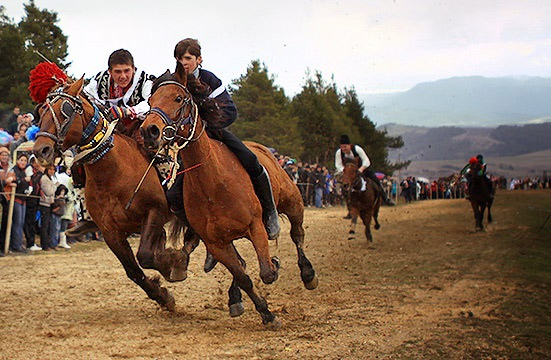St. Theodore's Day
The first Saturday after Sirni Zagovezni in the Bulgarian folk calendar is st. Theodore's Day (BG: Todorovden). Its celebration is closely related to the health of the horses, so it is also known by the name Horse Easter.
St. Theodore (Tyron) is known as the patron of horses. All customs on that day are connected with the health of the horses and their owners. Early in the morning before sunrise, women prepare ritual bread, often in the shape of a horseshoe or horse, decorated with walnuts and garlic. Pieces of it they feed to the horses. For their health along with the bun the owners give away boiled corn.

The main ritual of the festival is the horse race, also called Kushia. It is believed that on this day st. Theodore would hop on his horse dressed with nine mantles to go to God beg for the arrival of summer. On his ride to God, he would step down of the horse, then thrust his spear into the ground and steam would come out of it - the summer is coming.
Men and boys participate in the race, which is an honour and pride for every farmer. The horses are well groomed and adorned with beads. Large and small gather to watch the races. The winner of the competition receives award: the horse most often is prized with a bridle and the owner with shirt or towel. After the race the winner with his horse goes around all homes and congratulate the villagers. In every home a girl or a young woman is offering to the horse water from which none has drunk or wine.
On this day the people with the same name receive visits.
Krasimira Dubarova - Department Ethnography RHM Burgas